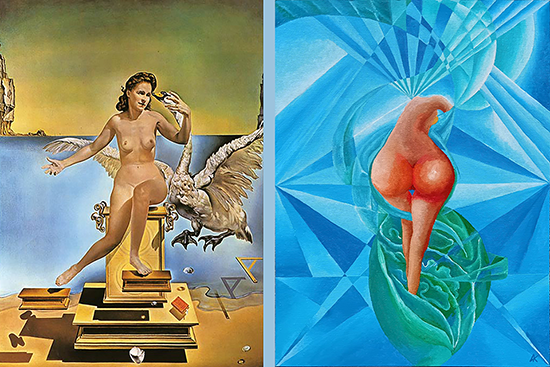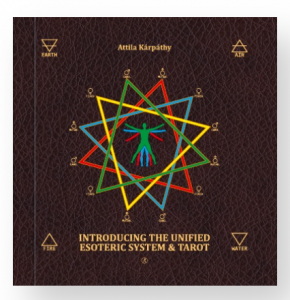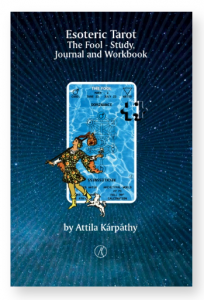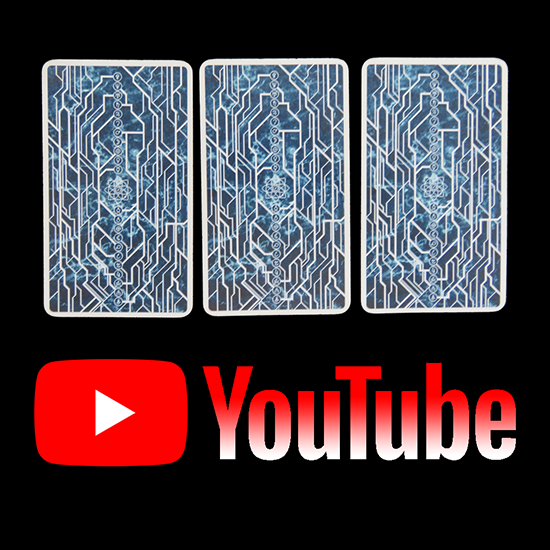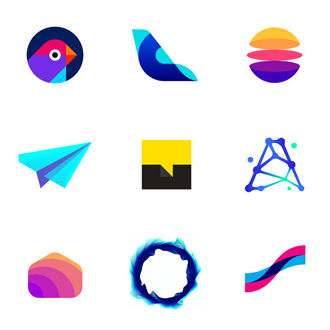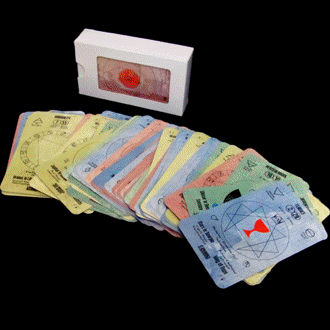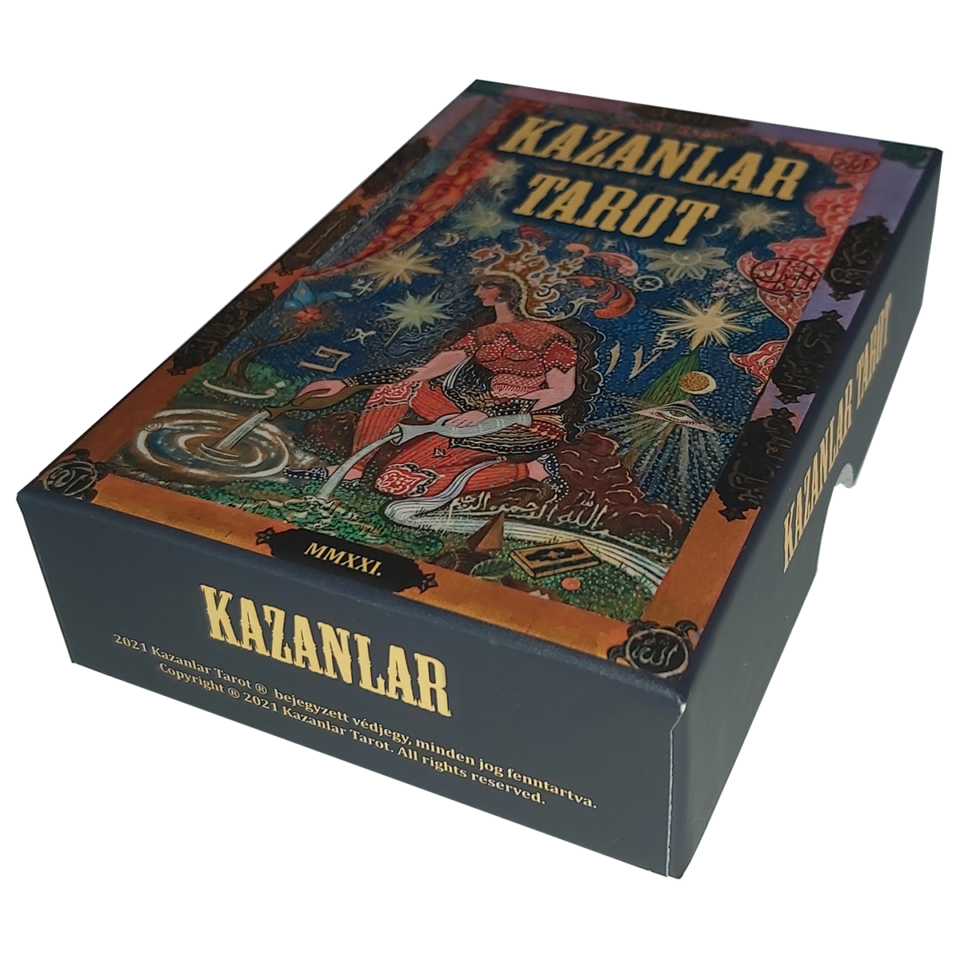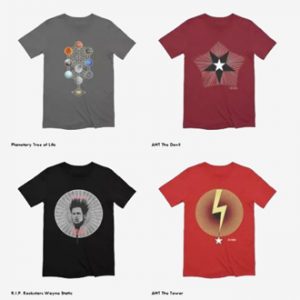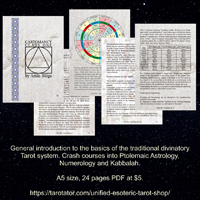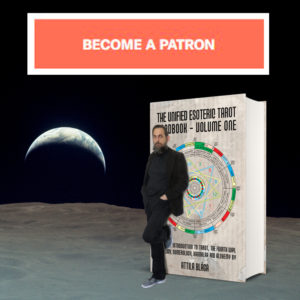Acrylic on canvas.
20 x 30 cm (7.87 x 11.81 inch).
On sale.
If you are interested, don’t hesitate to get in touch with me:
tarotator@gmail.com
Your support is crucial to continue my work.
Thank you!
The World card is often seen as completing the Fool’s journey. The ardent question is whether it is the final destination or a door to another dimension. Or, better said, what lies behind the unseen?
Spirituality is about the invisible world, yet people are often stuck in the material, visible world.
Therefore, let’s start with the iconography of the card.
Because the first physical copies of the Tarot deck mysteriously emerged around the middle of fourteenth-century Italy, not surprisingly, the imagery of the cards is profoundly imbued with Christian spirituality.
Christ in Majesty or Christ in Glory is the Western Christian image of Christ seated on a throne as ruler of the world. Early depictions were developed based on the description of the Heavenly throne in 1 Enoch, Daniel 7, and The Apocalypse of John from the Bible.
They show Jesus surrounded by a pointed oval aureole called a “mandorla”, the word for “almond” in Italian, which resembles the wreath of leaves in the card. In the four corners around the mandorla appear the four living creatures mentioned in the books of Ezekiel and Revelation: a bull, a lion, a man, and an eagle. In Christian tradition, they are called tetramorph and symbolise the four evangelists.
In the West, the evolving composition remains consistent within each period until the Renaissance.
The Visconti-Sforza Tarot is one of the earliest known decks from the middle of the fifteenth century. The Visconti-Sforza moniker is used collectively to refer to incomplete sets of approximately fifteen decks.
The standard design of the World card is the depiction of the heavenly city, the New Jerusalem.
Commonly envisioned through an arch, we can see a beautiful landscape by the sea, a river and several buildings, sometimes constructed from images from the other cards. In the centre of the field is a knight holding a victory banner.
Above the arch is a beautiful, richly dressed woman rising out of a cloud, which grows out of a crown. She holds a crown in one hand and a trumpet in the other.
The Book of Ezekiel contains the first record of the New Jerusalem. New Jerusalem is Ezekiel’s prophetic vision of a city centred on the rebuilt Holy Temple, to be established in Jerusalem. In the Book of Revelation in the New Testament, the city is also called the Heavenly Jerusalem, and it is also called Zion in other books of the Christian Bible.
New Jerusalem is described as a bride and the Anima Mundi, the Soul of the World. According to Robert M. Place, the combination of symbols suggests that she is also the Lady of Sovereignty, a romantic symbol of the soul of the land that a knight must marry to become the king.
However, at the beginning of the twentieth century, hidden fragments of Tarot cards from different decks were found in the walls of the Sforza Castle in Milan. Among these were found two trumps, the Sun and the World.
Interestingly, the World card features a nude figure in the centre and four figures in the corners. Unfortunately, the torso on the figure is damaged, and the sex cannot be determined. The design resembles the later so-called Tarot of Marseille pattern.
The Jaques Vieville deck was printed in Paris between 1643 and 1664. The naked figure is male, most likely Christ, while in all the other Tarot of Marseille decks, the nude is female or, at least, ambiguous sex.
The Marseilles “Le Monde” card with a female nude dancing can be a deviant version of Christian iconography or can represent the bride, both symbolising innocence.
Subsequently, the symbols of the Cardinal signs have replaced the four evangelists.
It would be fascinating to understand what triggered this transformation and how and why it occurred.
The Anima Mundi theme transcended into the fifteenth-century Gringonneur deck.
Rooted in ancient Greek and Roman philosophy, the concept of the Anima Mundi posits an intrinsic connection between all living beings, suggesting that the world is animated by a soul and the world soul infuses the cosmos with life and intelligence.
In various depictions, the card features Christ or Hermes.
While the iconography is predominantly Christian, elements indicate pre-Christian traditions.
Another possible theme at the origin of the World card might be the myth of Phanes.
In Orphic cosmogony, Chronos is said to have created the silver egg of the universe, out of which burst the first-born deity. He was described as a beautiful, golden-winged male or hermaphroditic deity.
Phanes have been depicted emerging from a cosmic egg, the Orphic egg, wrapped in the coils of a serpent. Frequently, Phanes’s iconography incorporates a quincunx and features the heads of a bull, a lion, a ram and a snake.
Phanes was a deity of light and goodness, whose name meant “to bring light” or “to shine”.
The Marseilles “Le Monde” and Pamela Colman Smith’s The World card from the Rider-Waite deck also resemble Botticelli’s Birth of Venus.
Painted by Sandro Botticelli between 1482 and 1485, the Birth of Venus has become a landmark of fifteenth-century Italian painting. Botticelli was commissioned to paint the work by the Medici family of Florence.
Inspired by Ovid’s Metamorphoses, Venus is portrayed naked on a shell on the seashore. On her left, the winds blow gently, caressing her hair with a shower of roses, and on her right, Ora, a handmaid, waits for the goddess to go closer to dress her shy body.
The painting contains references to the “Stanzas”, a famous poetic work by Agnolo Poliziano, a contemporary of Botticelli and the greatest Neoplatonic poet of the Medici court.
Neoplatonism was a current of thought that connected Greek and Roman cultural heritage with Christian spirituality.
The Neoplatonic philosophical meaning of the painting is the birth of love and spiritual beauty as a driving force of life.
On the other hand, Venus, one of the brightest objects in the sky, has been made sacred to gods of many cultures and has been a prime inspiration for writers and poets as the morning and evening stars. In classical mythology, Lucifer, “light-bringer” in Latin, was the name of the planet Venus as the morning star.
Speaking of symbols, visual elements and inspiration, I would also mention a couple of paintings by Salvador Dali.
One is Geopoliticus Child Watching the Birth of the New Man, painted in 1943; the other is Leda Atomica from 1949.
Geopoliticus Child Watching the Birth of the New Man was executed during Dalí’s stay in the United States from 1940 to 1948. The painting shows a man scrambling out of an egg while an adult woman and child look on.
The egg is a common subject in Dalí’s work. Early in his career, eggs commonly symbolised hope and love, while in later works, the egg is a Christian symbol of purity and perfection.
Leda Atomica depicts Leda, the mythological queen of Sparta, with the swan. Leda is a nude frontal portrait of Dalí’s wife, Gala, seated on a pedestal with a swan suspended behind and to her left, while different objects, a book, a set square, two stepping stools and an egg float around her.
However, the composition of my painting of World was also inspired by Dali’s “Young Virgin Auto-Sodomized by the Horns of Her Own Chastity” from 1954.
During the 1950s, Dalí painted most of his subjects as composed of rhinoceros horns. Here, the young virgin’s buttocks consist of two converging horns, and two horns float beneath. The painting recalls his depiction of his sister Ana María in “Young Woman at a Window” from 1925.
It has also been speculated that it is a painting of Gala, yet the figure is based on a photograph from a 1930s sex magazine.
In 1958, Dalí wrote, “Paradoxically, this painting, which has an erotic appearance, is the most chaste of all.”
The World card in the Tarot deck is a symbol of completion.
In classic cartomancy, the card signifies a long journey. According to Court de Gébelin, the card represents time or the world. Éliphas Lévi associated the card with the Hebrew letter Taw, considering it the microcosm, the sum of all in all. Following Paul Christian, Mathers’s interpretation is reward.
Waite noted, “One of the worst explanations concerning it is that the figure symbolises the Magus when he has reached the highest degree of initiation”.
It is a very intriguing thought, although perfectly aligned with the gender ambiguity surrounding the various depictions of Phanes, the Anima Mundi and even the transition of the naked Christ into a dancing nude woman.
From an alchemical point of view, transmutation is the Magnum Opus or Great Work, a term for working with prima materia to create the philosopher’s stone. However, it was not all chemistry or metallurgy, chasing the transmutation of lead into gold.
The transformation can refer to different things, such as passing from sickness to health, reverting from old to young, or transforming from material to spiritual life.
My beloved alchemist and author, Frédéric Lionel, stated that “evolution is the supreme reason behind the Great Work”.
He wrote, “Life unfolds in the fathomless depths of nature, and everything manifests it. The World, therefore, offer itself to man’s awareness, inviting him to go beyond appearances to encounter an essential Reality, which is veils”. He continues quoting Saint Paul, “The world is the mysterious mirror of pure Truth. Everything existing reflects a portion of this Truth, which man must discover by cultivating and embellishing the kingdom which he is meant to govern”.
Unlike Lionel, Gurdjieff affirmed that human evolution is against nature and the universe.
Opposed to the Fool, which signifies the beginning, Crowley’s Universe signifies the end. If the first represents nothing, the last also represents nothing.
“I also said to myself, As for humans, God tests them so that they may see that they are like the animals. Surely, the fate of human beings is like that of the animals; the same fate awaits them both: As one dies, so dies the other. All have the same breath; humans have no advantage over animals. Everything is meaningless. All go to the same place; all come from dust, and to dust, all return. Who knows if the human spirit rises upward and if the spirit of the animal goes down into the earth?” (Ecclesiastes 3:18-21)
In Lévi’s spirit, he noted that “the letter Tau means the Sign of the Cross, that is, of extension, and this extension is symbolised as four-fold because of the convenience of constructing the revolving symbol of Tetragrammaton”.
I often emphasised that we pay too much attention to the superficial and deceitful visible instead of focusing on the subtle unseen.
To produce a representative depiction of something, one should understand the subject of the graphic expression.
Transcendence is most frequently mentioned related to the Little Death card. In that case, it has a mystical or sexual exaltation connotation. Transcendence is the result of an intense emotional experience.
The Little Death card relates to Scorpio, a Fixed Water sign.
The World is attributed to Aquarius, a Fixed Air sign.
According to the four-fold theory, there should also be a Fixed Fire and Fixed Earth related transcendence, one to each plane of existence.
The Fixed Fire is Leo, and the card associated with it is Strength. The fixed Earth is Taurus, and the card attributed to it is the Empress.
While the traditional depictions seem to feature the symbols of the Cardinal signs, it appears that it would be more appropriate to feature the Fixed signs: Taurus, Leo, Scorpio and Aquarius.
The World card relates to the mental/intellectual plane, which means a change of mentality. It requires stepping outside our current perception and understanding of reality and stepping into the unknown.
Therefore, the World card is breaking down barriers and conveniences.
Another aesthetic aspect I would like to address is direction.
Most depictions feature a frontal nude. It seems more appropriate to show someone stepping out of this world into another, so the figure should be presented from behind as departing.
Details – one would say, yet details make the difference.
Tarot is not about art – it is a highly sensitive esoteric instrument.
Gurdjieff has spoken about “real art” and art in a general sense, as most people use the term.
He said art is “simply mechanical reproduction, imitation of nature or other people, or simply fantasy, or an attempt to be original”.
Real art, on the other hand, “ is something quite different. Among works of art, especially works of ancient art, you meet with many things you cannot explain and which contain a certain something you do not feel in modern works of art”.
Art is subjective, while real art is objective. The content and the awareness of the creator make a crucial difference.
Gurdjieff noted, “In real art, there is nothing accidental. It is mathematics. Everything in it can be calculated, everything can be known beforehand. The artist knows and understands what he wants to convey, and his work cannot produce one impression on one man and another impression on another, presuming, of course, people on one level. It will always, and with mathematical certainty, produce one and the same impression. At the same time, the same work of art will produce different impressions on people of different levels. And people of lower levels will never receive from it what people of higher levels receive. This is real, objective art”.
Unfortunately, most modern Tarot decks are only copies of imitations made by artists who are unprepared for the esoteric task they pursue.
Symbols have changed, and the interpretation of symbols has changed. Mechanical copies of preexisting images are subversive forms of misinformation. Not knowing is never an excuse.
The World card symbolises the opportunity to step out of the darkness of ignorance into the light of knowledge. It is a rational and conscious choice.
Free your mind, and the rest will follow.
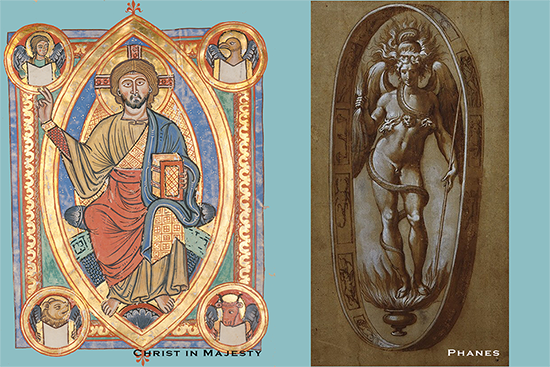
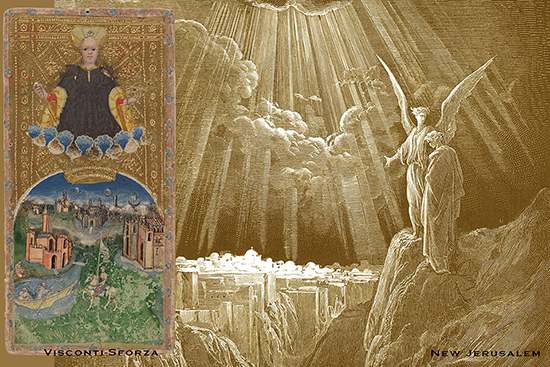
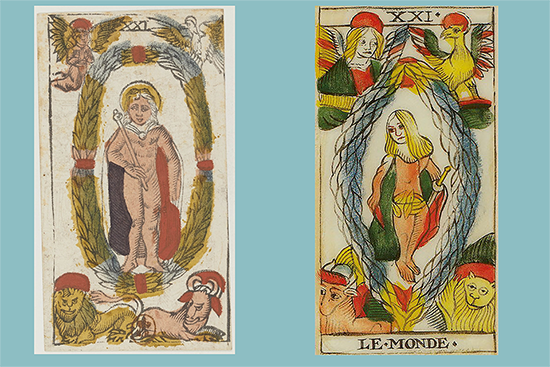
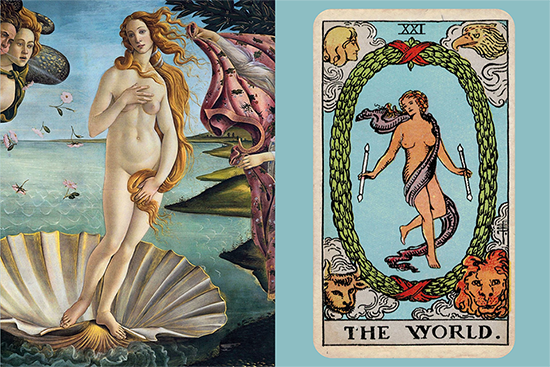
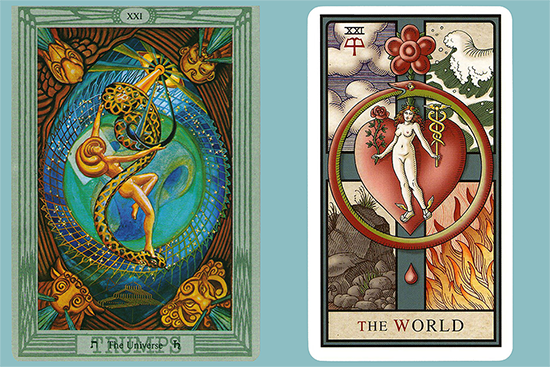
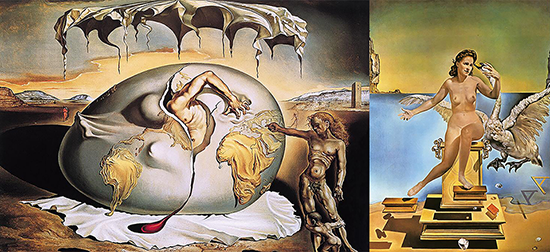
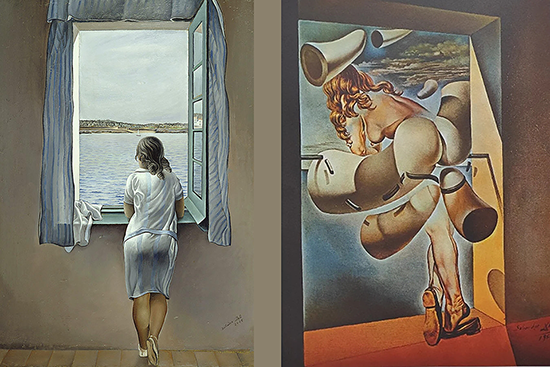
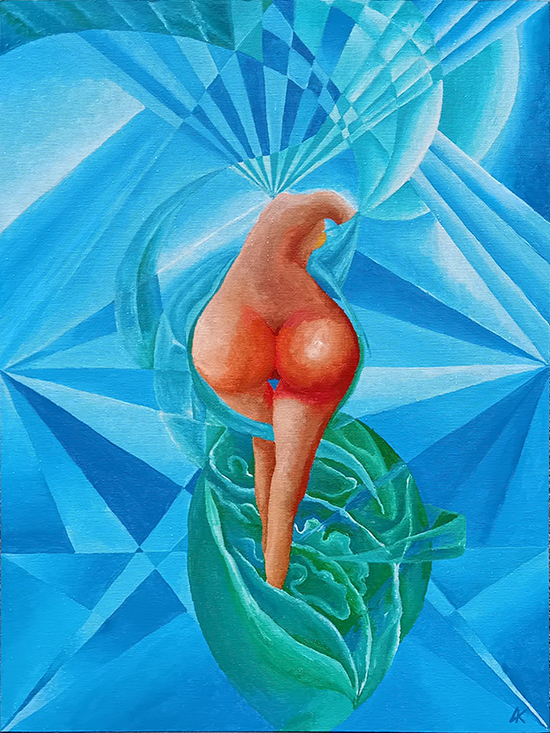
#painting #theworld #tarot #attilakarpathy #art #esoteric

